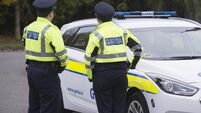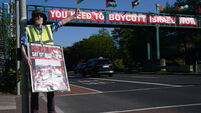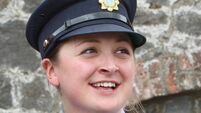21 witnesses to alleged shoot-to-kill incidents dead, court told
Twenty-one police witnesses to alleged security force shoot-to-kill incidents in the North are dead, a coroner's court heard today.
Up to 40 more are elderly and may have difficulty giving evidence, the preliminary hearing in Belfast was told.
The case involves six people, including IRA men and a Catholic teenager, shot dead around Lurgan and Armagh in 1982. Inquests into the deaths have been delayed for many years.
Barrister for the police Gerry Simpson QC said: "In relation to police witnesses a total of 144 police witnesses who were interviewed by Stalker/Sampson (investigation team) have been identified. Of those, 21 are deceased and of the remaining group some 30-40 are 75 years plus of age."
Coroner John Leckey is investigating the 1982 deaths of IRA men Eugene Toman, Sean Burns and Gervaise McKerr near Lurgan, Co Armagh.
In November 1982, police fired 109 bullets into the car the three IRA men were travelling in after they claimed it crashed through a checkpoint.
It later emerged the three were suspected of involvement in the killings of three RUC officers in a bomb a fortnight earlier and had been under observation.
Mr Leckey also plans inquests into the deaths of teenager Michael Tighe, shot dead by the Royal Ulster Constabulary (RUC) at a hay shed near Craigavon, Co Armagh, in November 1982, where rifles were stored, and suspected INLA men Roddy Carroll and Seamus Grew, shot dead near Armagh in December 1982.
An investigation into whether police planned to kill them was carried out by former Greater Manchester Police deputy chief constable John Stalker and Sir Colin Sampson of West Yorkshire Police.
The Stalker and Sampson reports have never been made public.
The coroner is also probing the deaths of Sergeant John Quinn and Constables Alan McCloy and Paul Hamilton. The three RUC officers were killed by an IRA bomb which exploded beneath their armoured police car.
They were investigating a report of a robbery in Lurgan when the bomb exploded and sent their car flying into a field.
Mr Simpson said police had addresses for 65 civilian witnesses interviewed by Stalker/Sampson but they were 30 years out of date and it was not known how many were dead. He said some of the evidence, like cars used, had been destroyed some time ago.
Mr Leckey's barrister, Frank O'Donohue QC, said some of the witnesses may not be able to give evidence because they were in such a frail state and added another option was to take it at their home. However, there is little legal precedent for that and the decision to do so could be challenged in the High Court.
Mr O'Donohue highlighted the need to examine witnesses rigorously and fairly.
"One of the issues that may arise relates to the right of a jury to hear an inquest where these witnesses may not be presented before a jury and they cannot assess them in the way a jury would," he said.
The police forces to which officers Stalker and Sampson were attached, including Derbyshire and West Midlands, were written to by coroner John Leckey to consider if they hold any relevant material.
Mr Leckey said if juries were sworn he would have to hold separate inquests despite some commonality of evidence. He is considering hearing them without a jury and drawing up a report containing his findings.
Barrister for the families Karen Quinlivan said they favoured jury hearings.
Mr Leckey is also organising encrypted computers to take notes on background material held on the killings at a police base.
The next review hearing for the inquest will be held on May 13.













